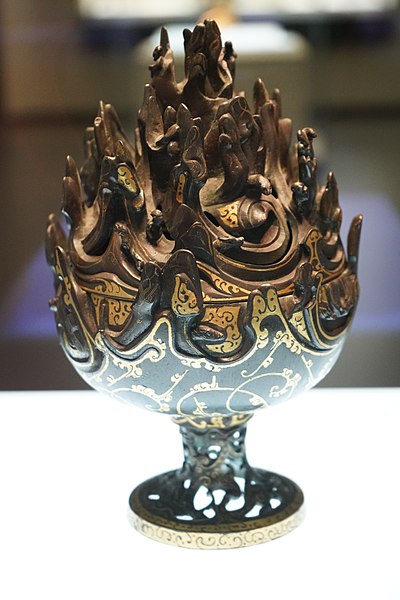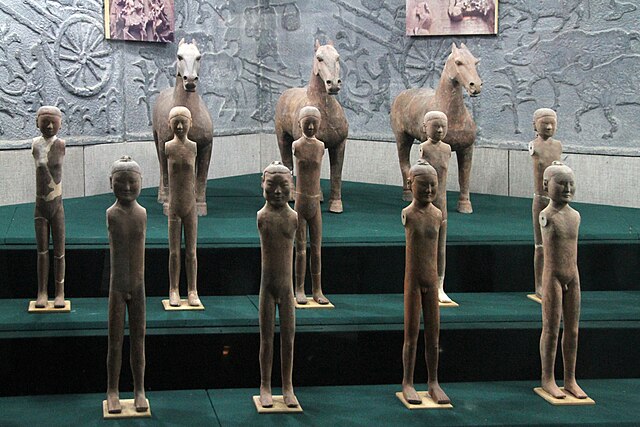Liu Sheng, Prince of Zhongshan
Liu Sheng, posthumously known as King/Prince Jing of Zhongshan, was a king/prince of the Western Han empire of Chinese history. His father was Emperor Jing, and he was the elder brother of Emperor Wu of Han. His mausoleum is one of the most important archaeological sites pertaining to the Western Han imperial family.
Bronze short sword with gold inlay and reliefs. Found in the tomb of Liu Sheng (d. 113 BC), Mancheng, Hebei, China. Chinese, Western Han, 112 BCE. Hebei Provincial Museum, Shijiahuang.
Bronze incense burner inlaid with gold; from the tomb of Liu Sheng, Prince of Zhongshan, at Hebei Mancheng, Western Han period, 2nd century BC
Jade burial suit of Liu Sheng, Hebei Museum
Emperor Jing of Han, born Liu Qi, was the sixth emperor of the Han dynasty from 157 to 141 BC. His reign saw the limiting of the power of the feudal kings and princes which resulted in the Rebellion of the Seven States in 154 BC. Emperor Jing managed to crush the revolt and princes were thereafter denied rights to appoint ministers for their fiefs. This move helped to consolidate central power which paved the way for the long reign of his son Emperor Wu of Han.
Depiction of Emperor Jing in Sancai Tuhui
A description of Emperor Jing at the entrance of the on-site museum at Han Yang Ling
Yangling mausoleum miniature pottery infantry (foreground) and cavalry (background); in 1990, when the tomb complex of Emperor Jing of Han (r. 157–141 BC) and his wife Empress Wang Zhi (d. 126 BC) was excavated north of Yangling, over 40,000 miniature pottery figures were unearthed. All of them were one-third life size, smaller than the 8,000-some fully life size soldiers of the Terracotta Army buried alongside the First Emperor of Qin. Smaller miniature figurines, on average 60 centimeters (24 in) in height, have also been found in various royal Han tombs where they were placed to guard the deceased tomb occupants in their afterlife.
Tomb figures from the Yangling Mausoleum of Han







